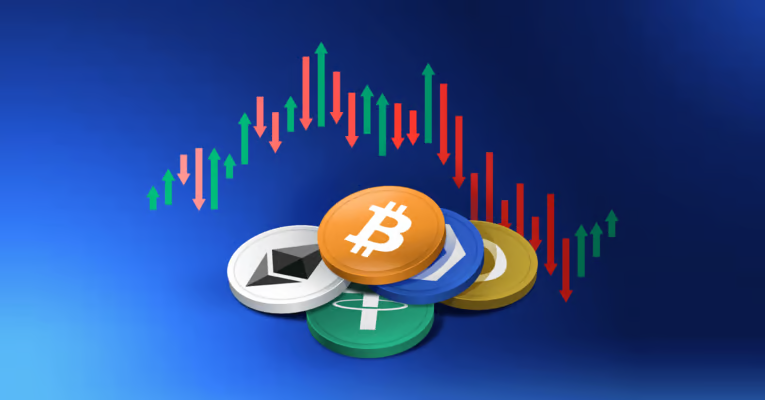
圖片來源: 探索後市加密貨幣市場 | Toptal®
加密貨幣生態系統中的主要加密貨幣市場發揮着至關重要的作用,在這裏,新代幣和加密貨幣首次面向投資者推出。該市場爲早期投資和接觸創新區塊鏈項目提供了重要機會。然而,這並非沒有風險。在本文中,我們將探討主要加密貨幣市場是什麼,它是如何運作的,參與者是誰,它所呈現的機會,涉及的風險,以及它與次要加密貨幣市場的區別。
什麼是主要加密貨幣市場?
主要的加密貨幣市場指的是加密貨幣生命周期的初始階段,新的數字資產或代幣首次向公衆推出的階段。這是加密貨幣首次推出的市場,通常通過類似的機制首次代幣發行(ICO),首次交易所發行(IEO)或安全代幣發行(STO)。
在主加密貨幣市場,代幣被出售給那些經常急於購買具有高增長潛力的新項目的投資者。對於區塊鏈項目來說,這是一個重要階段,因爲它有助於它們獲得發展和擴張的資金。
與傳統金融市場的比較
與傳統金融市場不同,在那裏公司發行股票和債券以籌集資金,主要加密貨幣市場允許區塊鏈項目通過出售其原生代幣來籌集資金。這些代幣可能具有各種用途,包括治理、質押或在項目生態系統內訪問特定服務。
加密貨幣在主要的加密市場中的引入通過提供一種替代的資本籌集手段並使投資機會民主化,打破了傳統金融。
主要加密貨幣市場如何運作?
在主要的加密貨幣市場, 一個項目通過不同的方法推出其加密貨幣或代幣,最常見的是ICO、IEO和STO。每種方法都有其自己的一套規則、流程和好處。讓我們更仔細地看看這些機制。
項目啓動和代幣發行
當一個區塊鏈項目或初創企業決定推出一種新加密貨幣時,流程開始。這通常涉及創建一份詳細介紹項目目標、代幣實用性以及資金使用方式的白皮書。投資者隨後可以通過購買代幣參與代幣銷售,而這些代幣在上市交易所之前就可以購買。
資金機制:ICO和IEO
ICO(首次代幣發行):ICO是在初級加密貨幣市場中籌集資金的最常見方式之一。項目發布一定數量的代幣給公衆,以換取像比特幣或以太坊這樣的已建立的加密貨幣。 ICO一直是一種非常有效的籌款方法,但由於監管問題和欺詐項目而備受批評。
IEO(首次交易所發行):IEO與ICO類似,但不是由項目自身管理,而是通過加密貨幣交易所進行代幣銷售。這增加了一層信任和安全性,因爲交易所通常在列出項目之前進行盡職調查。
Primary Crypto Market參與者
主要的加密貨幣市場涉及各種參與者,在生態系統中扮演特定角色。
開發者、投資者和交易所的角色
開發人員:這些是區塊鏈項目背後的創造者和創新者。他們負責代幣的開發和項目的整體願景。
投資者: 在初級市場上購買代幣的個人和機構被稱爲投資者。這些早期投資者希望他們的代幣價值在代幣在二級市場上市後會漲。
交易所:加密貨幣交易所,例如Gate.io,在代幣發行後促進其上市。一些交易所,比如Gate.io,提供IEO服務,幫助項目將其代幣推向更廣泛的受衆羣體。
代幣銷售階段:種子輪、私募輪和公開輪
代幣銷售通常分幾個階段進行:
種子輪:這是最早期的階段,在這個階段,代幣以折扣價出售給一小部分投資者。
私募輪:種子輪之後,通常會舉行私募代幣銷售,以從認可投資者那裏籌集更多資金。
公共輪:最終,公開代幣銷售對所有人開放,爲零售投資者提供了在代幣上市交易所之前購買代幣的機會。
主加密貨幣市場中的機會
在主要加密貨幣市場投資爲早期投資者提供了幾個機會。
早期投資潛力
主加密貨幣市場最具吸引力的特點是投資回報的潛力。由於代幣在ICO或IEO階段以較低價格出售,早期投資者可以利用代幣在上市交易所後可能的升值。
創新區塊鏈項目的訪問
主要的加密貨幣市場使投資者能夠獲得顛覆性的區塊鏈項目和技術,這些項目和技術可能尚未在二級市場上可用。通過參與ICO或IEO,投資者可以接觸到早期的新穎創新項目。
主加密貨幣市場相關風險
盡管主要加密貨幣市場具有巨大的潛在收益,但也伴隨着重大風險。
市場波動性和監管不確定性
加密貨幣以其波動性而聞名,在一級加密市場中的代幣也不例外。代幣的價值可能會劇烈波動,特別是在它們被列入交易所之前。此外,圍繞加密貨幣的監管環境仍在不斷發展,突然的監管變化可能會影響市場。
信息不對稱和欺詐項目
在主加密貨幣市場中,經常存在透明度不足和信息不對稱的情況。一些項目可能沒有提供足夠關於其發展或用途的細節,導致投資者感到不確定。此外,過去曾發生過欺詐或騙局項目的情況,這就是爲什麼在投資前進行盡職調查至關重要。
主要加密貨幣市場的監管合規性
隨着加密貨幣行業的成熟,監管合規性正成爲主要加密貨幣市場中越來越重要的因素。
遵守證券法和反洗錢實踐
許多國家已經開始監管加密貨幣行業,以防止欺詐、洗錢和其他非法活動。因此,在主要加密市場推出代幣的項目必須遵守證券法,並實施反洗錢(AML)實踐,以確保合規並保護投資者。
確保透明度和投資者保護
投資者保護是主要加密貨幣市場中的另一個關鍵考慮因素。爲了確保透明度,項目必須披露有關其代幣銷售的關鍵信息,包括代幣經濟學、團隊信息和項目路線圖。監管機構還在努力制定更嚴格的規定,以保護投資者。
區分主要和次要加密貨幣市場
在主要的加密貨幣市場專注於發行新代幣的同時,次級加密貨幣市場涉及這些代幣在加密貨幣交易所上市後的交易。
了解市場差異和投資者影響
在一級市場,代幣以折扣價直接從項目處購買,而在二級市場,代幣以市場價格在投資者之間買賣。一級市場由於缺乏流動性和項目失敗的潛在風險更高,而二級市場在代幣獲得流動性和交易量後提供更穩定的交易。
最終思考
主要的加密貨幣市場爲早期投資者提供了令人興奮的機會,使他們能夠在項目進入主流交易所之前獲得突破性的項目。然而,由於市場波動性、監管不確定性以及存在欺詐項目的潛在風險,謹慎對待是至關重要的。通過了解主要加密貨幣市場的運作方式、參與者以及涉及的機會和風險,您可以做出更明智的決策,並更好地應對這個不斷發展的領域。在進入主要加密貨幣市場之前,務必進行徹底的研究,及時了解監管政策,並考慮您的風險承受能力。
有關加密貨幣交易和市場見解的更多信息,請訪問Gate.io.
相關文章

黃金價格走勢:市場焦點轉向鮑威爾演說

新手必讀:2025 年最新美債 ETF 推薦及策略

Nasdaq 100 指數最新動態與投資策略

2025 年房屋稅新制全方位解析—政策修訂重點及納稅人因應對策

